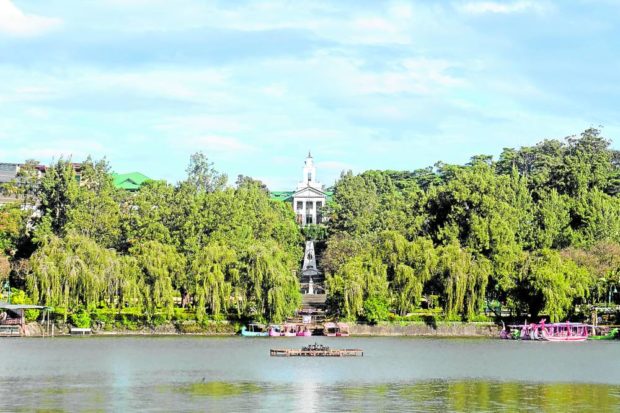
SEAT OF GOVERNMENT | The Baguio City Hall, as seen from Burnham Park, is one of the most recognizable buildings in the summer capital. A proposed ordinance seeks to turn sections of the city’s seat of government into a museum to showcase Baguio’s rich history, but some officials are questioning the move. —NEIL CLARK ONGCHANGCO
BAGUIO CITY, Benguet, Philippines — A proposed ordinance would turn the summer capital’s City Hall into a thriving museum to help fulfill its mandate as a creative city.
But the measure sponsored by Councilor Lilia Fariñas, which is now on second reading, immediately drew questions concerning its legality and the security of artworks it would be protecting.
The building may not be safe enough for valuable pieces that may be placed under city government custody, said Councilors Betty Lourdes Tabanda and Mylene Yaranon when the proposal was discussed at this week’s regular session on Monday.
“This is a public place and everyone can enter,” Tabanda said.
Apart from the difficulty of securing Baguio’s most accessible government building, she also asked if operating as a commercial museum and a gallery is permitted by law.
Fariñas said the City Hall’s stature as a historical building makes it an ideal art center to enhance Baguio’s “creative economy,” or the artist, artisan, and crafts industry that contributes to the city’s financial growth.
Baguio was designed and built as a hill station by the American colonial government in the early 1900s.
A marker installed in 2018 by the National Historical Commission of the Philippines showed that the earliest version of the City Hall was a wooden structure put up in 1910.
Distinctions
Baguio was chartered in 1909 to serve as the seat of the American government during summer. It was also the country’s first city to join the creative cities network of the United Nations Educational, Scientific and Cultural Organization in 2017.
The city was recognized for its folk art and crafts produced by artists and craftsmen who operate micro and small enterprises.
But the City Hall, which was rebuilt after World War II and renovated in the late 1990s, “was not built to serve as a gallery,” said Eugene Buccayan, chief of the city’s general services office, on Tuesday.
“The city does not have the facility to hold valuable artwork, which must have its own moisture and temperature-controlled rooms,” he said.
His office, Buccayan said, is constructing a facility for preserving important materials, including original documents and historic furniture that date back to the beginnings of Baguio.
The city government, however, is not equipped to store art donations, much less private artwork to be put on display for commercial purposes, he said.
“Losing the artwork is also a liability the city can’t do without,” he added.
RELATED STORIES
Baguio wants to keep statues, monuments safe from vandals
Creative council aim: Bigger market for Baguio artists
Artists see Baguio ‘Stone Hill’ as big, living canvas

